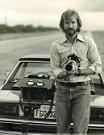img012.jpg
(I can’t help myself...Beavers in Juneau.) Sent down to Juneau one summer to help out during the height of the tourist season, I did an inspection ride, also known as “en route,” in a Beaver on floats. In the back were paying passengers from a cruise ship. It was a good ride with no problems up to the Taku Glacier and back, a regular highway of airplanes on either side of the channel hauling tourists back and forth. When we got back to the Gastineau Channel in front of Juneau, a boat had just departed and left a couple lines of rollers behind. I kind of expected the pilot to fly over the waves or do a go-around, but, no, he settled right into them. Only doing an airworthiness check, not being a seaplane pilot myself, sterile cockpit and all, I said nothing. Well, we kissed the top of the first roller, kissed the second more in the French fashion, and then hit the third one hard, so hard my David-Clarks fell down around my neck. While I glared at the pilot, he recovered, set her down, looked over at me and shrugged, somewhat sheepishly. During the landing, passengers in the back yelled, “Weeeeee!” They thought it was all normal and part of the ride. As they say, any landing you walk away from, or maybe swim away from, is a good one. And here’s a picture of my buddy coming in at the float pond in Fairbanks.
img011.jpg


 Thanks:
Thanks:  Likes:
Likes: 


 Reply With Quote
Reply With Quote



Bookmarks